Bologna
With its terracotta rooftops, medieval towers, and the world’s oldest university, Bologna is a feast for the senses. Stroll under endless porticoes, enjoy vibrant markets, and savor rich dishes like tagliatelle al ragù. This lively city blends history, culture, and unforgettable cuisine in true Italian style.
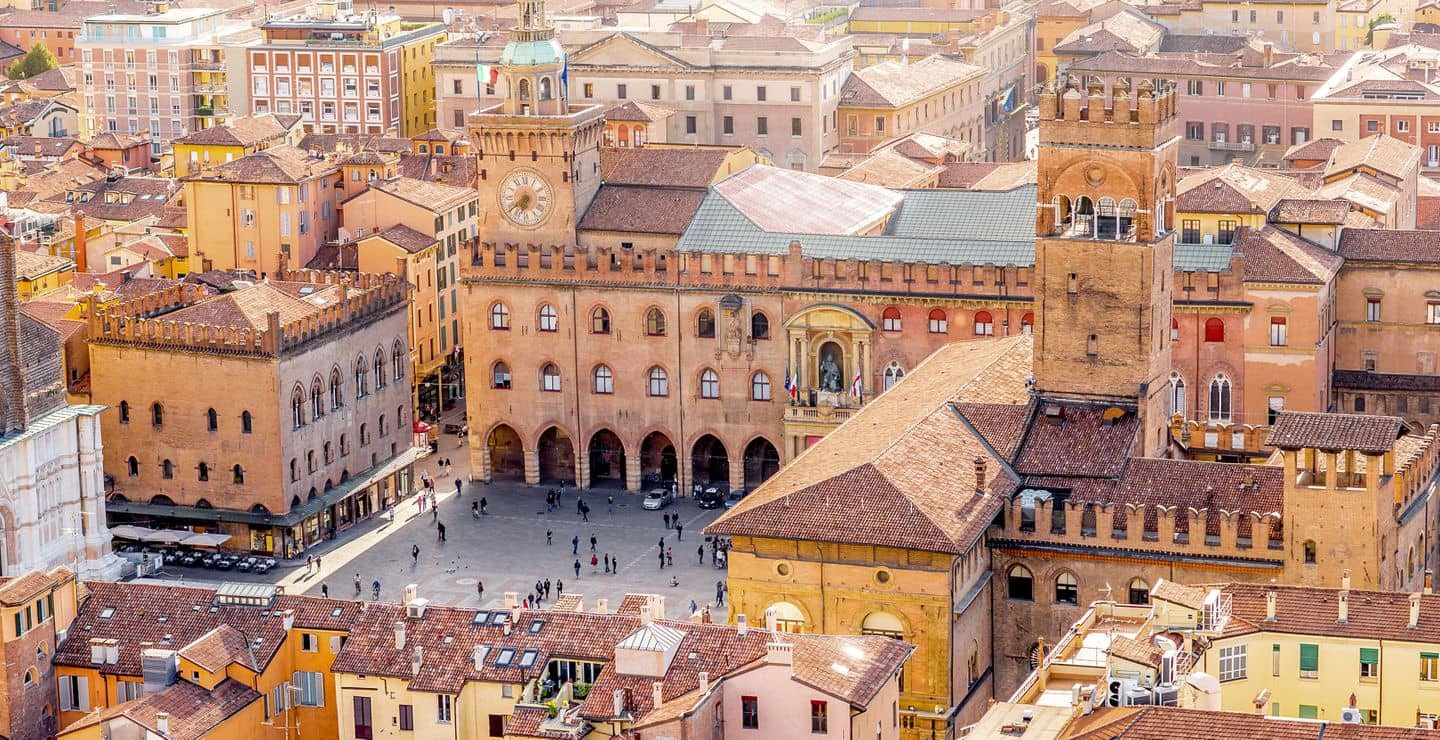
Where to Stay in Bologna?
Hotels, B&B's...
Hotel Re Enzo
UNA Hotels San Vitale Bologna
Pigro House - Bologna Airport Suite
Dimora Il Parco B&B
Bologna Suites - Private Bathroom
B&B Maglo'
Casa Bertagni
Alberghi Hotel Blumen
Il Convento dei Fiori di Seta
Zanhotel Regina
Hotel Sant'Orsola Collection by GSA Hotels
Porta Saragozza
Locanda Corte Roveri
Hotel Pedrini
Hotel Porta San Mamolo
Attico di Via D'Azeglio
B&B Il Giardino
THE SYDNEY HOTEL
Il Castello Hostel Boutique
Casa Munay Bed & Breakfast
Hotel Metropolitan
Hotel San Felice
B&B Il Riparo Dei Prendiparte
B&B Via Del Carro
L.ADY HOME
LE STATUE BNB
Well.B
Meraki Home di Trotta Andrea
Ayhome B&B
Hotel Palace Bologna
The 4 cats
B&B Real Fly
ParkView Bed and Breakfast
Mars41 B&B
Antica Residenza D'Azeglio
Ristorante I Portici
Riva Reno Apartment
B&B Di Piazza San Vitale
B & B Bologna sleep
HOLABOLOGNA Luxury Rooms and Flats
B&B La Magnolia
Giulia Guest house Bologna
Palazzo Liberty BnB
Liberty House
Santo Stefano Apartments
A due passi dal Lumière
Mini Suite
Galliera Residence Bologna
Beatrice B & B Bologna
Cristina Rossi Bed and Breakfast
N'Uova Campagna
Residence le Porte
Dimore Bolognesi - Monolocale Porta San Vitale
Residence Sant'Orsola
Royal Central Room
Cavalieri's Grand | Unique Stay in Bologna
Bolognino B&B
Aparthotel Sant'Orsola
Tilia
Casa Isolani Piazza Maggiore 1.0
Falegnami Boutique Suites - BolognaRooms
Art Hotel Orologio
Bohoostel srl
Bed & Breakfast Portasaragozza
Hotel la Pioppa
Casa Isolani Santo Stefano
Hotel Roma
Casa Miramonte
Mirasole Suite Apartments
Affittacamere Cortesia 3
Ristorante Hotel Emi
Grand Hotel Elite
AFFITTACAMERE ANGELICA
B&B Residenza Palazzo Marchesini
B&B Casa Elide
b & b suite
Le Torri B&B Apartments
ResArt Iacomus
Bologna Centrale Rooms B & B
BB Veronesi
A Casa Di Luna
Bed And Breakfast Arcobaleno
Central City Rooms Group
Albergo Atlantic
Hotel University
Bed & Breakfast Case Osti
B&B Elegance
Hotel Liberty 1904
B&B Lidiya
B&B Maglo Centro
4 Star Family & Friends Apt Bologna
BLQ01 Boutique B&B
Le Suites dell'Edera
Dopa Hostel
Tempobiancosuites
La Lanterna B&B
Brianza
Nettuno Hotel
Albergo Olimpic
Hotel Sophia
annalisa-aparts in bologna
B&B Ceci e Cleo
Bologna Luxe Haven
La Dimora degli Artisti - Bologna
Hotel Internazionale
Relais Bellaria Hotel & Congressi
Astoria Hotel
UNA Hotels Bologna Centro
Hotel Mercure Bologna Centro
Hotel Accademia
Room sweet Room 2
Bibliò Rooms - Guesthouse Bologna
Mitico Hotel
Aemilia Hotel
Design Club Collection
Hotel Ideale Bologna
Il Delfino a Bologna, Bologna
VILLA MASI Rental Rooms
B&B Selvarossa
Hotel I Portici
Hotel Maxim
Hotel Corona D'oro
room breakfast marconi inn
Hotel Fiera
Hotel Bologna Airport
Suite Hotel Elite
Hotel Maggiore Bologna
Corte Sant'Orsola 4
Country Fashion Home
Best Western City Hotel
Best Western Plus Tower Hotel Bologna
Hotel Panorama
Elizabeth Lifestyle Hotel
Art Hotel Commercianti
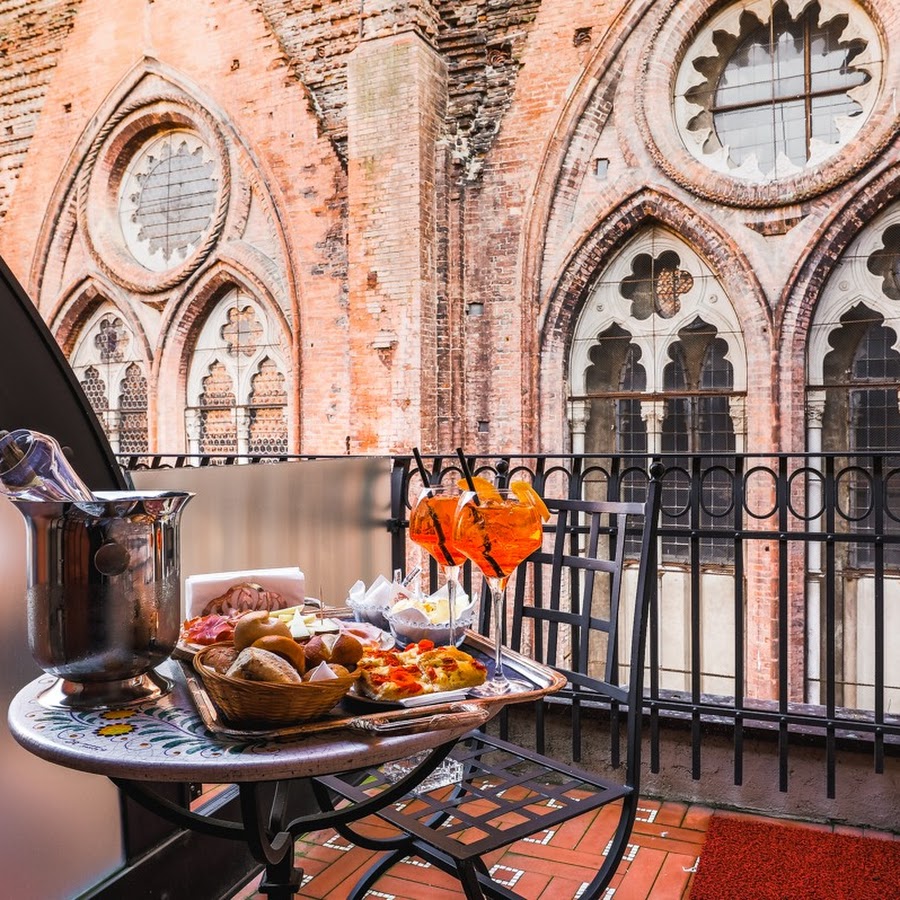
The Social Hub Bologna
Hotel Donatello
HP Fly Hotel Bologna
B&B HOTEL Bologna
Hotel NH Bologna De La Gare
Savhotel Fiera Bologna
CDH Hotel Bologna
Savoia Hotel Regency
Starhotels Excelsior
Hilton Garden Inn Bologna North
Residenza Rialto
JR Hotels Amadeus Bologna
Royal Hotel Carlton
Hotel Country House Savoia
Grand Hotel Majestic già Baglioni
Hotel Cosmopolitan Bologna
Hotel del Borgo
Hotel San Donato - Bologna centro
Combo, Bologna
IL TIRO ROOMS
Living Place Hotel Bologna
B&B Il Mughetto
Room & Breakfast Nettuno 29
Centro Turistico Città di Bologna
Things to see or do in Bologna
Archaeological Civic Museum of Bologna
The Archaeological Civic Museum of Bologna (Italian: Museo Civico Archeologico di Bologna) is located in the fifteenth-century Palazzo Galvani building at Via dell'Archiginnasio 2 postal code 40124 Bologna, once known as the Hospital of Death. Founded in September 1881 by the merging of two separate museums: the one belonging to the University of Bologna – heir of the Room of Antiquity belonging to the Academy of Sciences founded by Luigi Ferdinando Marsili in (1714) – and that belonging to the City of Bologna (enriched by the antique collection of Artist Pelagio Palagi (1860) and the large amount of finds from excavations conducted in and around Bologna during these times. This museum is among the most important in archeological finds in Italy and is highly representative of the local history from prehistoric period to Roman Age. Additionally, its ancient Egyptian collection is among the most important in Europe. Between 1972 and 2012 the Museum has housed over 150 exhibitions with focus on archeology but also on arts.The Archaeological Civic Museum of Bologna is located in the fifteenth-century Palazzo Galvani building. It showcases ancient artifacts and offers insights into the region's history.

Teatro Duse
The Teatro Duse is one of the oldest extant theaters in the city of Bologna, Italy. Located in the Palazzo del Giglio, the theatre's address is at 42 Via Cartoleria, 40124. Built by the engineer Antonio Brunetti, it opened as the Teatro Brunetti in 1822. In 1898 it was re-named for the actress Eleonora Duse. While more frequently used as a venue for plays during its history, the theatre has also presented other types of performance such as operas and concerts. The opera composer Guglielmo Zuelli conducted operas at the theatre in the mid to late 1880s. In the 1890s the conductor Antonino Palminteri was active as a resident opera conductor at the theatre. Gialdino Gialdini's opera I due soci premiered at the theatre on 24 February 1892.One of the oldest extant theaters in Bologna, known for its beautiful architecture and rich history.

Certosa di Bologna
The Certosa di Bologna is a former Carthusian monastery (or charterhouse) in Bologna, northern Italy, which was founded in 1334 and suppressed in 1797. In 1801 it became the city's Monumental Cemetery which would be much praised by Byron and others. In 1869 an Etruscan necropolis, which had been in use from the sixth to the third centuries BC, was discovered here. The Certosa is located just outside the walls of the city, near the Stadio Renato Dall'Ara, at the foot of the Monte della Guardia and the Sanctuary of the Madonna di San Luca.A former Carthusian monastery that is now a monumental cemetery, known for its beautiful architecture and historical significance.

Museum of the Risorgimento, Bologna
The Civic Museum of the Risorgimento is located in the ground floor of the Casa Carducci, located in Piazza Carducci 5, in central Bologna, Italy.The Civic Museum of the Risorgimento is located in the ground floor of the Casa Carducci, highlighting the history of Italy's unification.

Orto Botanico dell'Universit� di Bologna
The botanical garden operated by the University of Bologna, featuring a variety of plant species and a peaceful environment.
Towers of Bologna
The Towers of Bologna are a group of medieval structures in Bologna, Italy. The two most prominent ones remaining, known as the Two Towers, are a landmark of the city.The iconic medieval towers of Bologna, including the famous Two Towers, are a must-see landmark.

Mineralogical Collection
A museum dedicated to mineralogy and natural history, located near Porta San Donato.
Marconi Museum and Mausoleum
44°25′53″N 11°16′04″E / 44.431351°N 11.267684°E / 44.431351; 11.267684 The Museum and Mausoleum of Guglielmo Marconi is a museum and burial structure for the Italian scientist, inventor, and engineer, Guglielmo Marconi. The tomb is located adjacent to the 17th-century Villa Griffone/Villa Marconi, located on via Celestini #1 in Pontecchio Marconi, about 15 kilometers outside the city of Bologna in Emilia Romagna, Italy.This museum is dedicated to Guglielmo Marconi, the inventor of the radio, and includes his mausoleum.

Museo d'Arte Moderna di Bologna
The Museo d'Arte Moderna di Bologna or MAMbo is a purpose-designed modern and experimental art museum in Bologna, Italy — and which includes The Museo Morandi [it], a collection of more than 250 works by noted painter, Giorgio Morandi (1890–1964).MAMbo is a modern art museum that includes a collection of works by noted painter Giorgio Morandi.

Museo internazionale e biblioteca della musica
44°29′34″N 11°21′01″E / 44.4929°N 11.3502°E / 44.4929; 11.3502 The Museo internazionale e biblioteca della musica (International Museum and Library of Music) is a music museum and music library in the Palazzo Aldini Sanguinetti, in the historic center of Bologna, Italy.This museum and library in the Palazzo Aldini Sanguinetti focuses on the history of music and its cultural significance.
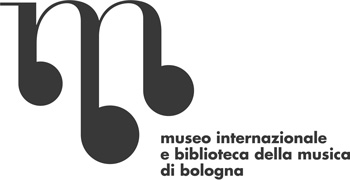
Arca di San Domenico
The Arca di San Domenico (Ark of Saint Dominic) is a monument containing the remains of Saint Dominic. It is located in Dominic’s Chapel in the Basilica of San Domenico in Bologna, Italy.A monument containing the remains of Saint Dominic, located in the Basilica of San Domenico.
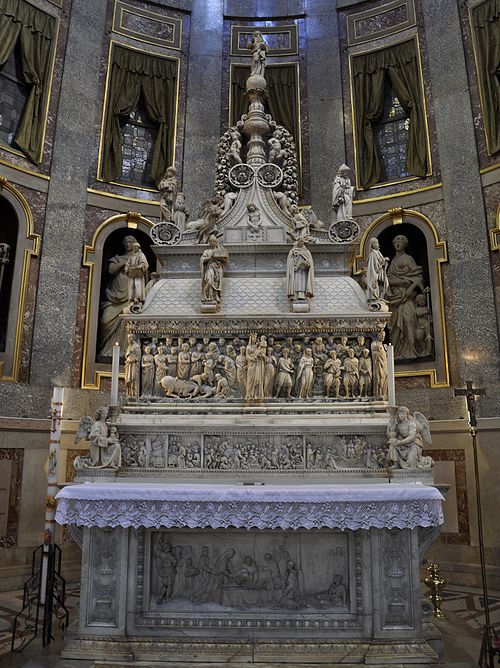
Palazzo Davia Bargellini, Bologna
The Palazzo Davìa Bargellini is a Baroque style palace located on Strada Maggiore in central Bologna, Italy. It presently hosts the Civic Museum of Industrial art and Davìa Bargellini Gallery, which is an eclectic collection of paintings as well as applied arts and functional ornamentation, described as curiosities of the old Bologna. The diverse applied art collection includes ceramics, liturgical robes, keys, ornamental door knobs, marionettes from street theaters, furniture, iron grille work, elaborately carved wooden frame, and a gilded carriage.A Baroque palace that hosts the Civic Museum of Industrial Art and an eclectic collection of paintings.

Galleria d'Arte Moderna, Bologna
The Galleria d'Arte Moderna of Bologna is the modern art museum of the city. It has five exhibition venues: MAMbo, the Museo d'Arte Moderna di Bologna; the Villa delle Rose; the Museo Morandi [it]; Casa Morandi; and the Museo per la Memoria di Ustica [it]. The collections consist of more than 3,500 items of modern and contemporary art.The modern art gallery with multiple exhibition venues, showcasing contemporary art and historical collections.

Santa Maria della Vita
44°29′36″N 11°20′41″E / 44.493398°N 11.344617°E / 44.493398; 11.344617 The Sanctuary of Santa Maria della Vita is a late-Baroque-style, Roman Catholic church in central Bologna, near the Piazza Maggiore.A late-Baroque-style church known for its stunning interior and historical significance.

Palazzo Poggi
The Palazzo Poggi is a palazzo in Via Zamboni 33, Bologna, Italy. It is the headquarters of the University of Bologna and of the rector of the university.The headquarters of the University of Bologna, showcasing historical architecture and university history.

Pinacoteca Nazionale di Bologna
The National Art Gallery of Bologna (Pinacoteca Nazionale di Bologna) is a museum in Bologna, Italy. It is located in the former Saint Ignatius Jesuit novitiate of the city's University district, and inside the same building that houses the Academy of Fine Arts. The museum offers a wide collection of Emilian paintings from the 13th to the 18th century and other fundamental works by artists who were in some way related to the city.The National Art Gallery of Bologna, showcasing a vast collection of artworks from various periods.

Academy of Sciences of the Institute of Bologna
The Academy of Sciences of the Institute of Bologna (Accademia delle Scienze dell'Istituto di Bologna) is an academic society in Bologna, Italy, that was founded in 1690 and prospered in the Age of Enlightenment. Today it is closely associated with the University of Bologna.An academic society founded in 1690, significant in the Age of Enlightenment, promoting scientific research and education.
 en.wikipedia.org
en.wikipedia.orgBasilica of Santo Stefano
A complex of religious edifices known as Sette Chiese ("Seven Churches"), offering a unique architectural experience.
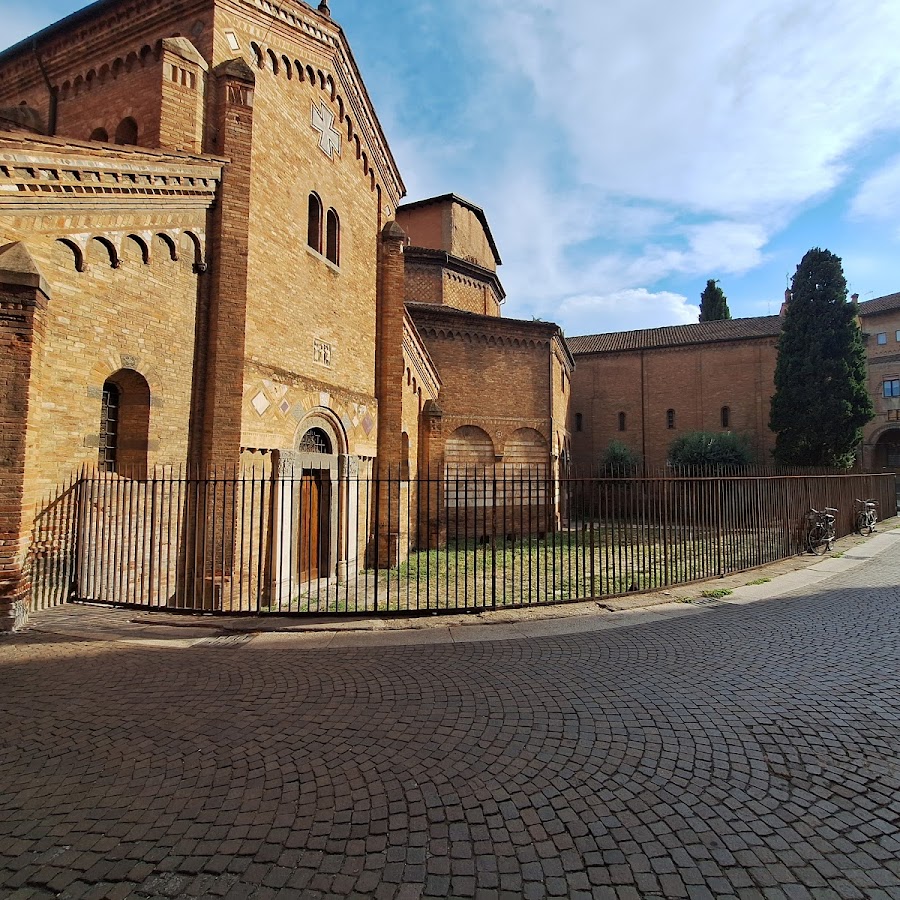
University of Bologna
The University of Bologna (Italian: Alma Mater Studiorum – Università di Bologna, abbreviated Unibo) is a public research university in Bologna, Italy. It is the oldest university in continuous operation in the world, and the first degree-awarding institution of higher learning. Teaching began around 1088, with the university becoming organised as guilds of students (universitas scholarium) by the late 12th century. The university's emblem carries the motto, Alma Mater Studiorum ("Nourishing mother of studies"), and the date A.D. 1088. With over 90,000 students, the University of Bologna is one of the largest universities in Europe. The university saw the first woman to earn a university degree and teach at a university, Bettisia Gozzadini, and the first woman to earn both a doctorate in science and a salaried position as a university professor, Laura Bassi. The University of Bologna has had a central role in the sciences during the medieval age and the Italian renaissance, where it housed and educated Nicholas Copernicus as well as numerous other renaissance mathematicians. It has educated a wide range of notable alumni, amongst them a large number of Italian scientists, prime ministers, supreme court judges, and priests. Aside from its main campus in Bologna, the University has additional campuses in Cesena, Forlì, Ravenna and Rimini as well as branch centres abroad in Buenos Aires, New York, Brussels, and Shanghai. It houses the fully funded boarding college Collegio Superiore di Bologna, the Bologna School of Advanced Studies, the botanical gardens of Bologna, a large number of museums, libraries and archeological collections, as well as the Bologna University Press.The oldest university in continuous operation in the world, with a rich history and
 en.wikipedia.org
en.wikipedia.orgPalazzo Ghisilardi Fava
Palazzo Ghisilardi Fava is a Renaissance style palace, located on via Manzoni 4 in Bologna, region of Emilia Romagna, Italy; it houses the Medieval Civic Museum of Bologna. Built for the notary and chancellor Bartolomeo Ghisilardi between 1484 and 1491 on designs of Zilio Montanari. In the courtyard of the palace, rises the medieval tower called Torre dei Conoscenti. The name is derived because the house on the site was owned by the Conoscenti family in the 14th century. The tower was damaged in the earthquake of 1505. During the Mussolini era, the palace housed the Casa del Fascio of Bologna. Across the street stands the church of the Madonna di Galliera.A Renaissance style palace that houses the Medieval Civic Museum of Bologna, showcasing artifacts from the medieval period.
